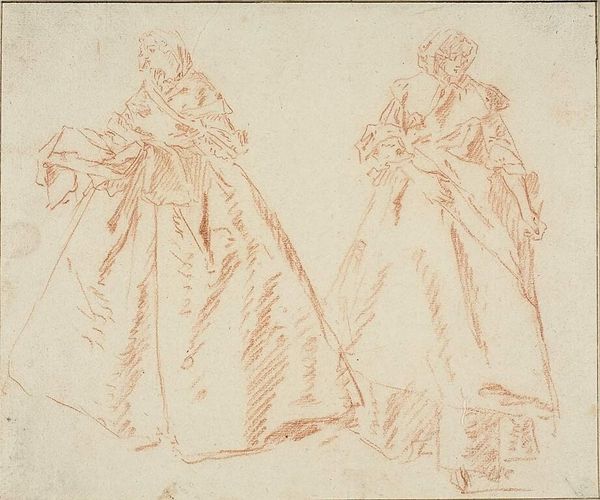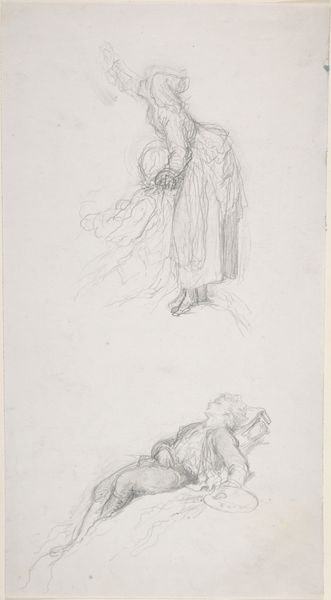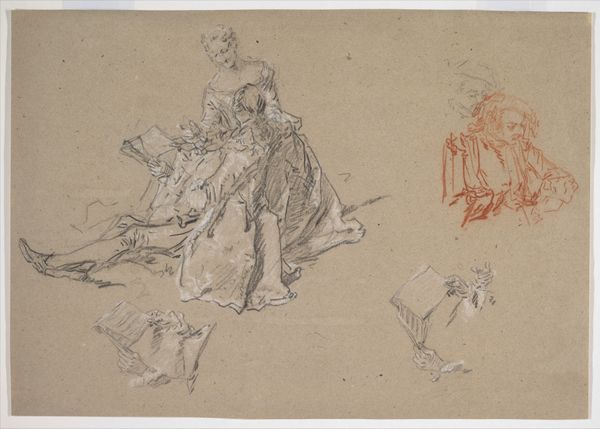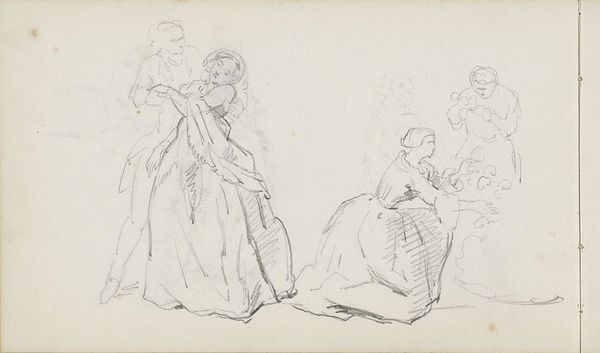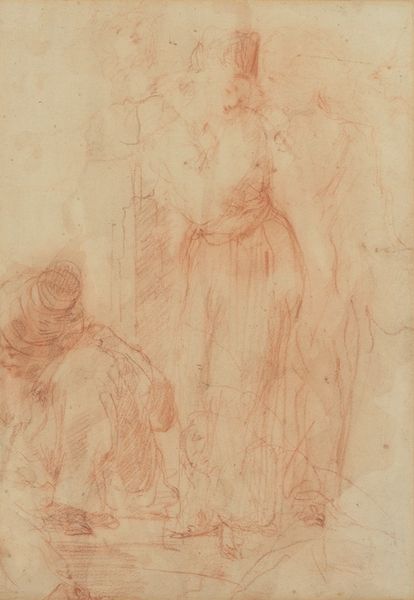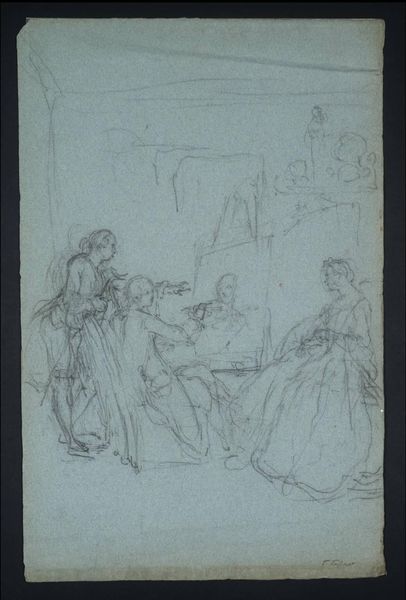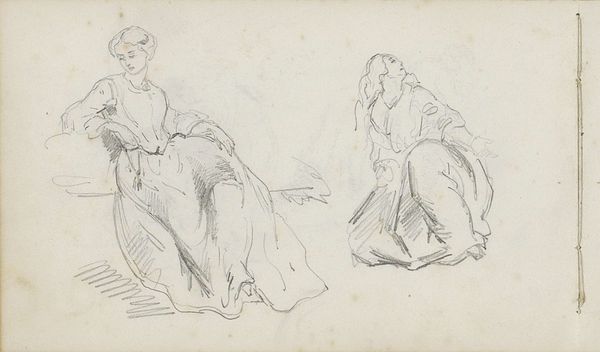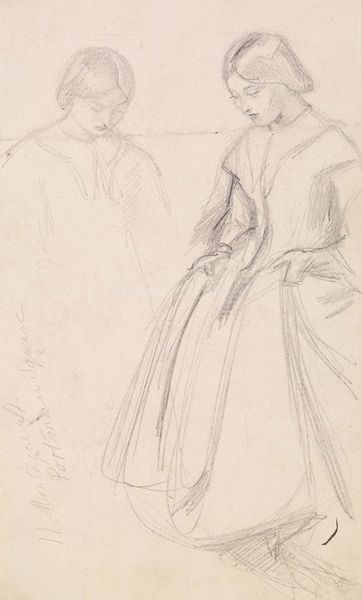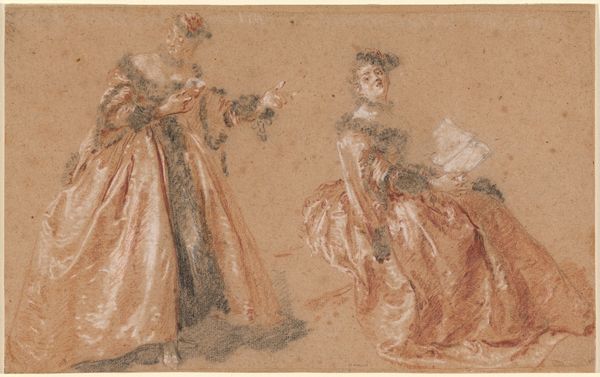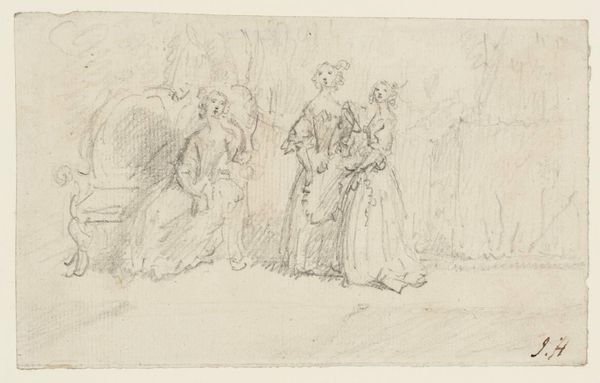
drawing, print, paper, chalk
#
portrait
#
drawing
# print
#
pencil sketch
#
figuration
#
paper
#
chalk
#
genre-painting
Dimensions: 201 × 244 mm
Copyright: Public Domain
Editor: This is "Study of Two Small Girls," a chalk drawing on paper by Nicolas Lancret, created around 1725. It's intriguing; the red chalk gives the drawing a sense of warmth, almost like looking at a memory. What's your interpretation? Curator: The 'warmth,' as you say, is interesting in light of the social function of art in 18th-century France. Consider the rise of the Rococo style, with its emphasis on playful elegance, a deliberate contrast to the stricter Baroque of Louis XIV's era. Genre paintings and portraits of children were in vogue. What does it mean to represent children this way? Editor: I guess I hadn't considered the politics of it. It's just... a sketch of two girls. Are you saying it's more than that? Curator: Absolutely. Lancret wasn't just capturing likeness; he was participating in the construction of childhood within the elite. These girls are carefully posed, their dresses reflecting status. These 'genre scenes,' seemingly innocent, helped define the era's social codes. Editor: So, the drawing is actually shaping, not just reflecting, how people viewed children? It is quite amazing to think about art as participating and also creating societal changes at the time. Curator: Precisely. And think about where it was displayed – most likely in private collections of the wealthy elite, reinforcing their values and sense of self. Editor: That's fascinating! It gives me a completely different way to think about art. It is like the values get drawn along with the image. Thank you. Curator: Indeed. Seeing art as a product and a producer of social and political meaning transforms how we understand its role.
Comments
No comments
Be the first to comment and join the conversation on the ultimate creative platform.
